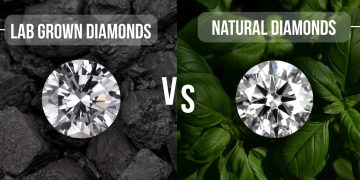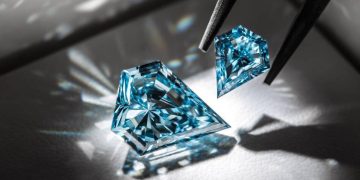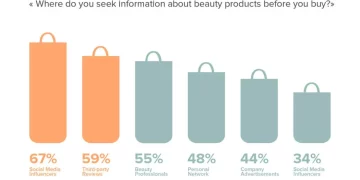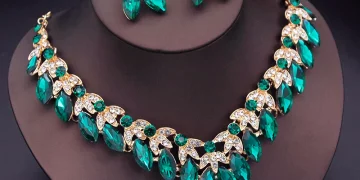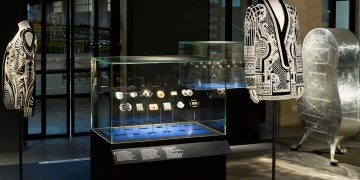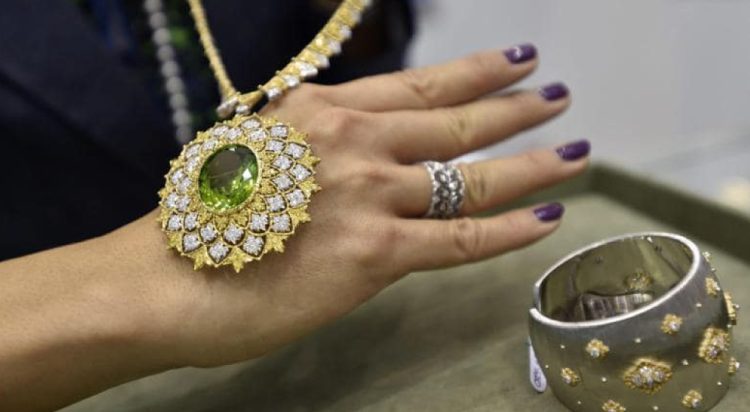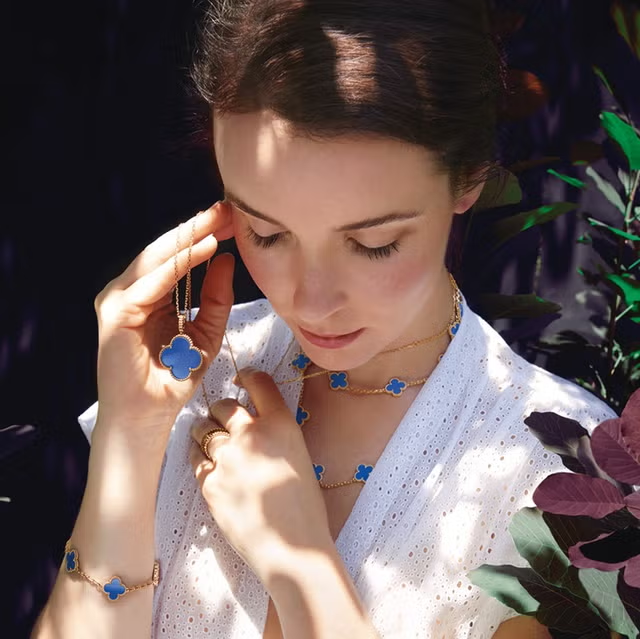In recent years, the luxury jewelry industry has seen a marked shift towards environmental consciousness and sustainability, as both consumers and companies become more aware of the impact their choices have on the planet. Luxury jewelry brands like Tiffany & Co., Chopard, and Cartier have taken significant strides to integrate eco-friendly practices, sustainable sourcing, and ethical labor into their operations. But the question remains: Can these sustainability efforts truly win the loyalty and favor of today’s consumers, especially in the luxury sector, where the reputation for craftsmanship and exclusivity has traditionally been the driving force behind success?
This article will explore how luxury jewelry brands’ efforts in sustainability and eco-consciousness are impacting consumer perceptions and whether these practices can not only enhance brand value but also serve as a catalyst for attracting a new, socially aware customer base.
1. The Growing Demand for Sustainability in Luxury
A. Shifting Consumer Mindsets
Over the past decade, there has been a growing awareness of environmental and social issues among consumers, particularly among millennials and Generation Z, who are known to prioritize sustainability in their purchasing decisions. These groups, which are rapidly becoming the largest demographic in the luxury market, are highly vocal about the importance of sustainability in fashion, including jewelry.
According to a McKinsey report, nearly 60% of consumers are willing to change their purchasing behavior based on a brand’s environmental responsibility. In fact, ethical consumerism has seen a rise in popularity, with buyers increasingly seeking brands that align with their values. This shift in mindset has pressured luxury jewelry brands to rethink their sourcing methods, production processes, and overall environmental footprint.
In response to these changes, many jewelry houses are incorporating ethical sourcing practices, such as using conflict-free diamonds, recycled metals, and lab-grown diamonds, to meet the rising demand for ethical luxury products. These measures not only demonstrate the brand’s commitment to sustainability but also appeal to customers who are more likely to support companies that contribute positively to the environment and society.
2. Sustainable Sourcing of Materials
A. Conflict-Free Diamonds and Ethical Gemstones
One of the most significant concerns within the jewelry industry is the sourcing of raw materials, particularly diamonds. Conflict diamonds, also known as blood diamonds, have long been a controversial issue, with links to human rights abuses, child labor, and armed conflict. In response to this, luxury jewelry brands have adopted strict sourcing policies to ensure that their diamonds are conflict-free.
For instance, Tiffany & Co. became one of the first major jewelry brands to commit to only using 100% responsibly sourced diamonds. The company participates in the Kimberley Process, a global initiative to eliminate the trade in conflict diamonds, and has expanded its efforts by tracing each diamond from mine to market to guarantee its ethical origins. This transparency is becoming an essential factor for consumers when making purchasing decisions.
Other luxury jewelry brands have also turned to sustainable gemstones, such as ethically sourced emeralds and sapphires. Brands like Chopard and Bvlgari have made strides to ensure that the gemstones in their collections are sourced in ways that do not harm the environment or exploit local communities.
B. Recycled and Lab-Grown Metals
In addition to ethical gemstones, many luxury jewelry brands are turning to recycled precious metals and lab-grown diamonds as part of their efforts to reduce their environmental impact. Recycled gold, for example, is used by many high-end jewelers, including Chopard and Cartier, to minimize the need for new mining, which has significant environmental consequences.
Lab-grown diamonds, which have the same physical and chemical properties as natural diamonds, are also gaining popularity in the luxury jewelry sector. These diamonds are created in a controlled environment, reducing the need for mining and ensuring that the environmental damage associated with traditional diamond extraction is minimized. Brands like De Beers and Vrai are at the forefront of this innovation, offering consumers a sustainable alternative to traditional diamonds.
By adopting these alternative materials, luxury brands are not only reducing their environmental footprint but also appealing to the growing number of environmentally conscious consumers.
3. Transparent and Ethical Manufacturing Practices
A. Fair Labor and Human Rights Initiatives
Sustainability in luxury jewelry goes beyond just sourcing materials. It also includes the ethical treatment of workers involved in the production process. Brands that prioritize fair labor practices, safe working conditions, and equitable wages are increasingly seen as leaders in corporate social responsibility.
Brands like Chopard have made significant commitments to ethical labor practices. They have implemented a Fairmined certification for their gold, which ensures that the metal is sourced from artisanal miners who work under fair labor conditions and adhere to environmental standards. This certification promotes responsible mining practices and guarantees that workers are treated fairly, making it easier for consumers to trust that their purchase supports both people and the planet.
B. Supply Chain Transparency
Transparency is becoming a major differentiating factor in the luxury market. Consumers now demand more insight into the sourcing, production, and supply chain behind the products they buy. Blockchain technology is increasingly being used to track the origins of materials and ensure that every step of the manufacturing process meets ethical standards.
Top brands like Tiffany & Co. and Cartier have embraced this trend by providing customers with traceable information about where and how their jewelry was made. This level of transparency helps reassure consumers that their purchases align with their values and ensures that they are supporting ethical practices from start to finish.
4. Eco-Friendly Packaging and Sustainability in Marketing
A. Reducing Environmental Impact Through Packaging
Sustainability in luxury jewelry is not limited to the products themselves but extends to the packaging as well. Excessive packaging can contribute to waste, so many luxury jewelry brands are opting for eco-friendly and recyclable packaging materials.
For instance, Chopard has introduced recyclable packaging for its products, ensuring that even the box or pouch that holds the jewelry has minimal environmental impact. Cartier has also made strides in this area by adopting sustainable packaging that aligns with their commitment to reducing their overall environmental footprint.
B. Digital and Sustainable Marketing Strategies
Social media and digital marketing have become powerful tools for luxury brands, allowing them to engage directly with their customers. But these platforms also offer an opportunity for brands to communicate their commitment to sustainability in innovative ways. By promoting their eco-conscious practices and sustainability certifications online, jewelry brands can reach a broader audience while staying true to their luxury status.
Luxury brands like Tiffany & Co. and Bvlgari have used their digital presence to share stories about their sustainable initiatives, from ethically sourced diamonds to carbon offsetting programs. This not only helps to raise awareness about environmental issues but also reinforces their commitment to luxury with a conscience.

5. Can Sustainability Truly Win Over Consumers?
A. Attracting New Consumer Segments
While the luxury jewelry market has traditionally been associated with exclusivity, high prices, and timeless craftsmanship, the new generation of consumers—especially millennials and Gen Z—are redefining what luxury means to them. For these consumers, a brand’s commitment to sustainability, ethical practices, and social responsibility can be just as important as the quality of the products themselves.
As the demand for ethically produced luxury goods increases, jewelry brands that prioritize sustainability are likely to win over a growing segment of socially conscious buyers. By aligning with consumer values, these brands have the potential to build long-lasting loyalty and drive future growth.
B. Maintaining Luxury Without Compromise
One of the main concerns for luxury jewelry brands that embrace sustainability is the perception that eco-friendly practices might compromise quality or luxury. However, as consumers become more educated about the importance of sustainability and ethical sourcing, this concern is starting to fade. Brands that have successfully merged luxury with sustainability prove that it is possible to maintain high standards of craftsmanship, exclusivity, and quality while also being environmentally conscious.
C. Overcoming Greenwashing Concerns
While many luxury jewelry brands have made significant strides in embracing sustainability, some consumers remain wary of “greenwashing”—the practice of making misleading claims about environmental or social efforts. Brands that genuinely prioritize sustainability must ensure that their claims are transparent and substantiated. Certifications like Fairmined, B Corp, and Kimberley Process Certification can provide consumers with the assurance that the brand’s practices are authentic and not just a marketing ploy.
Conclusion: Sustainability as a Key to Future Success
In conclusion, the luxury jewelry industry is undergoing a significant transformation, with sustainability emerging as a central pillar of brand strategy. As consumers become more environmentally and socially conscious, they are increasingly seeking brands that align with their values. Luxury jewelry brands that embrace ethical sourcing, fair labor practices, and eco-friendly production are well-positioned to attract new customers and build lasting loyalty.
By integrating sustainability into their core practices, luxury jewelry brands can not only protect the environment but also differentiate themselves in a competitive market. Sustainability has become more than just a trend—it is an essential element of brand identity and a critical factor in winning over today’s discerning consumers. If luxury jewelry brands can continue to innovate and demonstrate their commitment to the planet and its people, they will undoubtedly secure a strong place in the future of the jewelry market.

